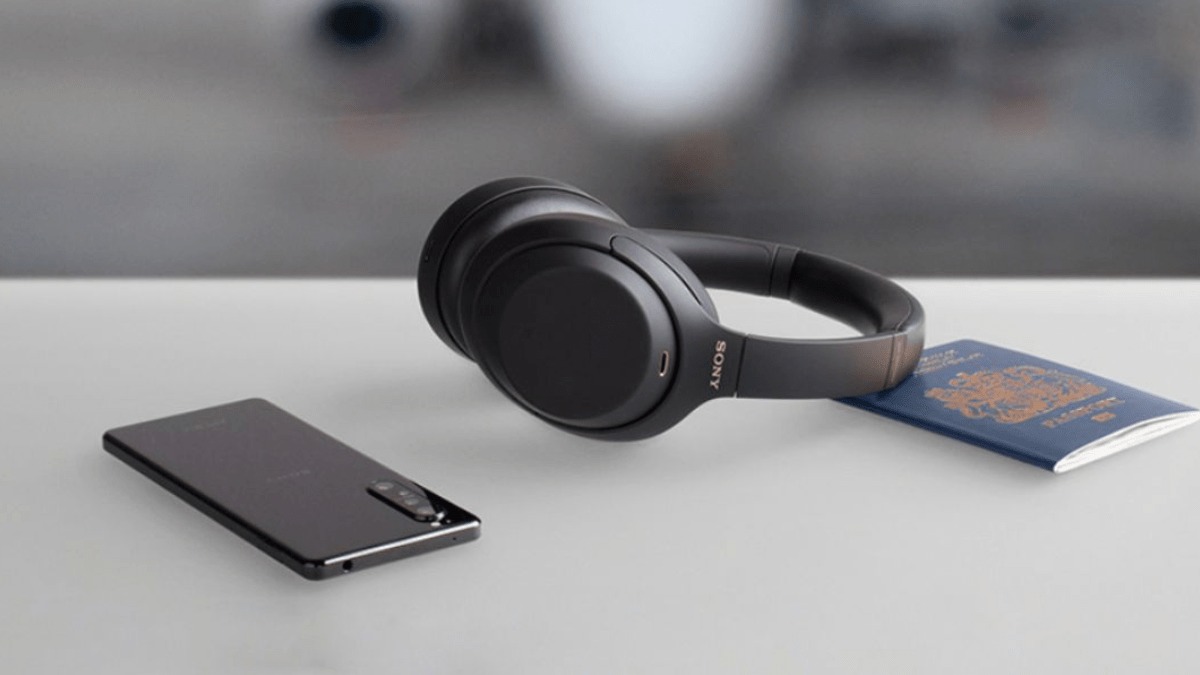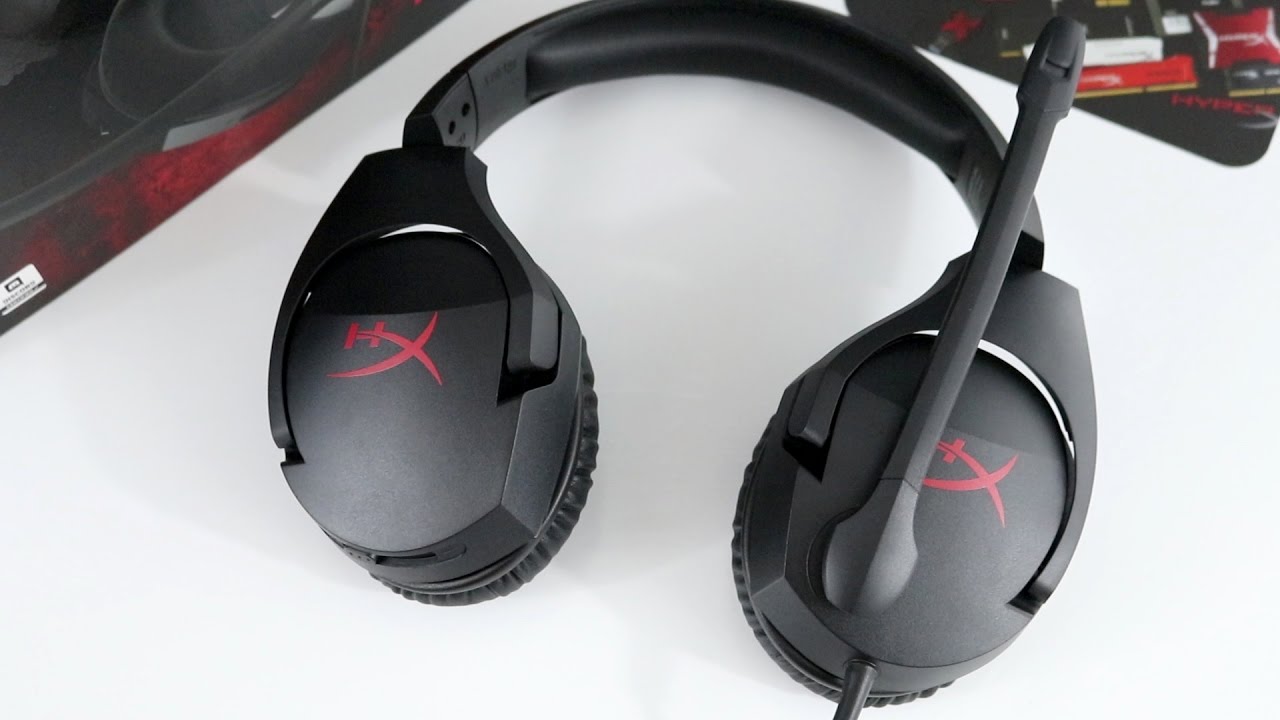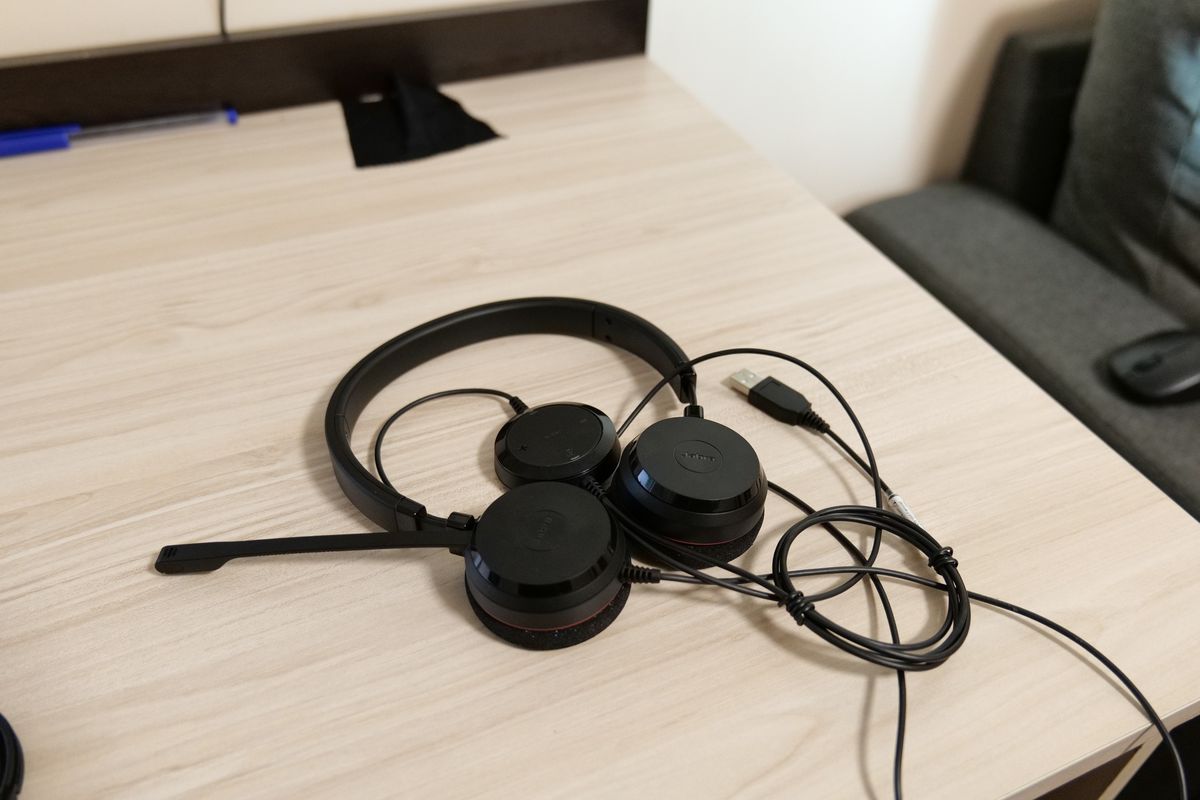Home>Production & Technology>Noise Cancellation>What Is Active Noise Cancellation?


Noise Cancellation
What Is Active Noise Cancellation?
Modified: January 22, 2024
Discover how active noise cancellation works and its benefits in reducing unwanted background noise. Find out more about noise cancellation technology and its applications.
(Many of the links in this article redirect to a specific reviewed product. Your purchase of these products through affiliate links helps to generate commission for AudioLover.com, at no extra cost. Learn more)
Table of Contents
Introduction
Have you ever found yourself in a loud and chaotic environment, struggling to focus or enjoy your music? If so, active noise cancellation (ANC) could be the solution you’ve been searching for. ANC is a revolutionary technology that aims to reduce or eliminate unwanted external noises, providing a more enjoyable and immersive experience. Whether you’re a frequent traveler looking for a peaceful journey or a music lover seeking uninterrupted audio, ANC has become an essential feature in many devices.
Active noise cancellation goes beyond traditional noise reduction methods by actively counteracting incoming sounds. It uses sophisticated algorithms and specialized hardware to analyze the ambient noise and produce an equal and opposite waveform, effectively canceling out unwanted sounds. This technology has become incredibly advanced over the years, resulting in improved performance and a more immersive experience.
While ANC is commonly associated with headphones, it is now making its way into various other devices such as earbuds, cars, and even home appliances. The ability to create a tranquil environment anywhere, anytime has made active noise cancellation a sought-after feature for many individuals.
In this article, we will explore how active noise cancellation works, the different types of ANC, the benefits it offers, the limitations it faces, and some of its various applications. By the end, you’ll have a thorough understanding of ANC and its potential impact on your everyday life.
How Active Noise Cancellation Works
Active noise cancellation works by using a combination of microphones, processing circuitry, and speakers to counteract unwanted external sounds. Here’s a step-by-step breakdown of how the process works:
- Microphone captures ambient noise: Active noise cancellation starts with a set of microphones strategically placed in the headphone or earbud. These microphones pick up the external sounds in your surroundings.
- Noise analysis: The captured ambient noise is then analyzed by the ANC circuitry. It identifies the frequency and amplitude of the incoming sounds to create an accurate representation of the noise profile.
- Creation of anti-noise: Once the noise profile is established, the ANC circuitry generates an anti-noise signal that is precisely out of phase with the incoming noise. This anti-noise has the opposite amplitude to the ambient noise, effectively cancelling it out when combined.
- Combining noise and anti-noise: The anti-noise signal is mixed with the audio signal, creating a composite signal containing both the desired audio and the anti-noise. This composite signal is then sent to the speakers or drivers inside the headphones or earbuds.
- Output with cancellation: When the composite signal reaches the speakers, they produce sound waves containing both the audio and the anti-noise. The anti-noise wave, with its inverse amplitude, effectively cancels out the corresponding portions of the ambient noise before they reach your ears.
This continuous process of capturing, analyzing, and canceling out ambient noise happens in real-time, allowing you to enjoy your music or audio content without the interference of external sounds. The result is a more immersive and enjoyable audio experience, particularly in environments with high levels of background noise.
It’s important to note that active noise cancellation is most effective at reducing consistent, steady noises such as airplane engine hum, train rumble, or office chatter. It may not be as effective at cancelling sudden or unpredictable noises like loud bangs or shouts, as the cancellation process requires a short time to adjust to these types of sounds.
Types of Active Noise Cancellation
Active noise cancellation technology has evolved over time, leading to the development of different types of ANC implementations. Let’s take a look at some of these types:
- Feedforward Active Noise Cancellation: This is the most common type of ANC. In feedforward ANC, the external microphones are positioned outside the earcup or earbud, capturing the ambient noise before it reaches your ears. The ANC circuitry then generates anti-noise to cancel out these incoming sounds. This type of ANC is effective for reducing low-frequency noise but may have limitations in canceling higher frequency sounds.
- Feedback Active Noise Cancellation: In feedback ANC, the microphones are placed inside the earcup or earbud, closer to your ears. This placement allows the microphones to capture both the ambient noise and the sound coming from the speakers. The ANC circuitry then generates anti-noise to cancel out the combination of external noise and internal sound. Feedback ANC is effective for reducing higher frequency noise and can provide better cancellation performance for certain audio frequencies.
- Hybrid Active Noise Cancellation: As the name suggests, hybrid ANC combines both feedforward and feedback ANC techniques. This approach aims to provide a broader range of noise cancellation by utilizing the strengths of both methods. By using a hybrid approach, ANC devices can effectively reduce noise across a wider frequency spectrum, providing users with a more comprehensive and immersive audio experience.
Each type of ANC has its advantages and limitations. Feedforward ANC is commonly found in over-ear headphones or earbuds, while feedback ANC is commonly used in in-ear headphones or earbuds. Hybrid ANC is seen in high-end audio devices that aim to provide the best possible noise cancellation performance.
It’s important to consider the type of ANC implemented in a device to ensure it aligns with your specific noise cancellation needs. Different types of ANC may offer varying levels of performance, so it’s worth researching and comparing the options before making a purchase.
Benefits of Active Noise Cancellation
Active noise cancellation provides a range of benefits that enhance the overall listening experience and improve the quality of life in noisy environments. Here are some key advantages of ANC:
- Noise Reduction: The primary benefit of active noise cancellation is its ability to significantly reduce or eliminate unwanted external sounds. Whether you’re traveling on a noisy airplane, working in a bustling office, or simply trying to relax in a noisy environment, ANC can create a more peaceful and immersive experience by suppressing background noise.
- Improved Audio Quality: By canceling out external noise, ANC allows you to focus solely on the audio you want to hear. This results in improved audio clarity, as you are not competing with background sounds. Whether you’re listening to music, watching movies, or making calls, ANC ensures that you can fully enjoy the nuances and details of the audio content without distractions.
- Reduced Fatigue and Stress: Constant exposure to loud or distracting environments can lead to fatigue and increased stress levels. ANC helps to alleviate these issues by creating a more peaceful atmosphere. With reduced external noise, your mind can relax, and you can concentrate better, leading to reduced mental fatigue and increased focus.
- Enhanced Privacy: ANC can enhance privacy in various situations, such as during phone calls or when working in public spaces. By reducing background noise, ANC prevents others from overhearing your conversations and allows you to maintain a sense of privacy and confidentiality.
- Better Sleep Quality: ANC headphones or earbuds are often used by people who struggle to sleep in noisy environments. By blocking out disturbances like traffic noise or snoring, ANC can help improve sleep quality, leading to a more restful night’s sleep.
Whether you’re a frequent traveler, a student studying in a noisy library, or simply someone who wants to escape the hustle and bustle of daily life, active noise cancellation offers a range of benefits that can greatly improve your overall audio experience and well-being.
Limitations of Active Noise Cancellation
While active noise cancellation is a powerful technology, it does have certain limitations that should be considered. Here are some common limitations of ANC:
- Ineffectiveness against sudden or impulsive noises: Active noise cancellation is most effective at reducing continuous background noise, such as the hum of an airplane engine or the drone of an air conditioner. However, it may struggle to cancel out sudden or impulsive noises, like a slamming door or a loud clap. ANC requires some time to analyze and generate the anti-noise, which can result in a delay in cancellation for such sounds.
- Reduced effectiveness for high-frequency sounds: ANC is generally more effective at canceling out low-frequency noises like engine rumble or traffic sounds. However, it may not be as effective at reducing high-frequency sounds like the voices of people nearby or sharp sounds. High-frequency sounds require more complex algorithms and additional hardware to cancel out effectively.
- Reliance on a good seal: For ANC to work optimally, the headphones or earbuds need to create a good seal against your ears. If there is any air leakage, the effectiveness of ANC can be significantly reduced. It’s important to ensure a proper fit to maximize noise cancellation performance.
- Battery dependence: Active noise cancellation requires power to operate, which means that ANC-enabled devices typically rely on built-in batteries. While the battery life of ANC devices has improved over the years, extended use of ANC can drain the battery faster compared to regular headphones or earbuds without ANC functionality.
- Distortion and artifacts: ANC algorithms can sometimes introduce slight audio distortions or artifacts to the sound. Although modern ANC systems aim to minimize these issues, there may still be subtle changes in audio quality when ANC is active. However, this is often considered a trade-off for the benefits of noise reduction.
Despite these limitations, active noise cancellation remains a valuable technology that significantly enhances the audio experience in noisy environments. By understanding these limitations, users can have realistic expectations and make informed decisions when choosing ANC-enabled devices.
Applications of Active Noise Cancellation
Active noise cancellation technology has found its way into various applications and industries, enhancing the user experience and addressing specific needs. Here are some notable applications of active noise cancellation:
- Headphones and Earbuds: ANC is commonly used in headphones and earbuds to provide a more immersive and distraction-free listening experience. Whether for music, movies, or calls, ANC-enabled headphones and earbuds create a personal sound sanctuary in noisy environments.
- Travel: Active noise cancellation has become a valuable companion for travelers. ANC headphones are particularly popular for frequent flyers, as they effectively reduce the noise of airplane engines, making long flights more enjoyable and restful.
- Office and Work Environments: ANC has found its way into office spaces, helping employees focus better and be more productive in open-plan offices or noisy work environments. ANC headphones can block out the background noise while allowing users to concentrate on their tasks.
- Study and Libraries: Students and researchers often rely on active noise cancellation to create a quiet and focused study environment, especially in bustling libraries or shared study spaces. ANC-enabled headphones or earbuds can minimize distractions and improve concentration.
- Healthcare: Active noise cancellation is also used to improve the healthcare environment. In hospitals, ANC technology helps reduce the impact of continuous noises like medical equipment beeps, ventilation systems, or hallway chatter, creating a more peaceful and comforting environment for patients.
- Automotive Industry: ANC is increasingly being employed in vehicles to counteract road, engine, and wind noise. This technology allows passengers to enjoy a quieter and more comfortable ride, enhancing their overall driving experience.
- Consumer Electronics: ANC has found its way into various consumer electronic devices, such as televisions, home theater systems, and home appliances. The integration of ANC in these devices aims to reduce background noise and improve the overall audio experience for users.
- Industrial and Manufacturing: Active noise cancellation is utilized in industrial sectors to reduce noise exposure for workers. By canceling out the loud noises generated by machinery or equipment, ANC can help protect workers’ hearing and create a safer work environment.
These are just a few examples of the wide-ranging applications of active noise cancellation. As technology continues to advance, we can expect to see ANC being integrated into even more devices and industries, providing enhanced experiences and improved overall well-being.
Conclusion
Active noise cancellation is a game-changing technology that has transformed the way we experience audio in noisy environments. By actively counteracting unwanted external sounds, ANC provides a range of benefits, including reduced noise, improved audio quality, and enhanced focus and relaxation.
Through the use of sophisticated algorithms and specialized hardware, ANC technology has become more advanced and widely available in various devices such as headphones, earbuds, cars, and home appliances. It has become an indispensable feature for those seeking a more immersive and peaceful audio experience.
While ANC has its limitations, such as its effectiveness against sudden noises or its dependency on a good seal, the advantages it offers outweigh these drawbacks. ANC can significantly reduce or eliminate background noise, leading to better concentration, reduced stress, and improved audio clarity.
Active noise cancellation has diverse applications and can be found in travel, offices, study environments, healthcare, automotive, consumer electronics, and more. Its adoption in these industries has greatly enhanced user experiences and improved overall well-being.
As technology continues to advance, we can expect further improvements in ANC algorithms, increased battery efficiency, and continued integration into a wider range of devices and industries.
In conclusion, active noise cancellation is a powerful technology that has revolutionized the way we listen to audio and interact with our surroundings. With its ability to block out unwanted noise and create a more immersive audio experience, active noise cancellation has become an essential feature for individuals seeking tranquility in a noisy world.











